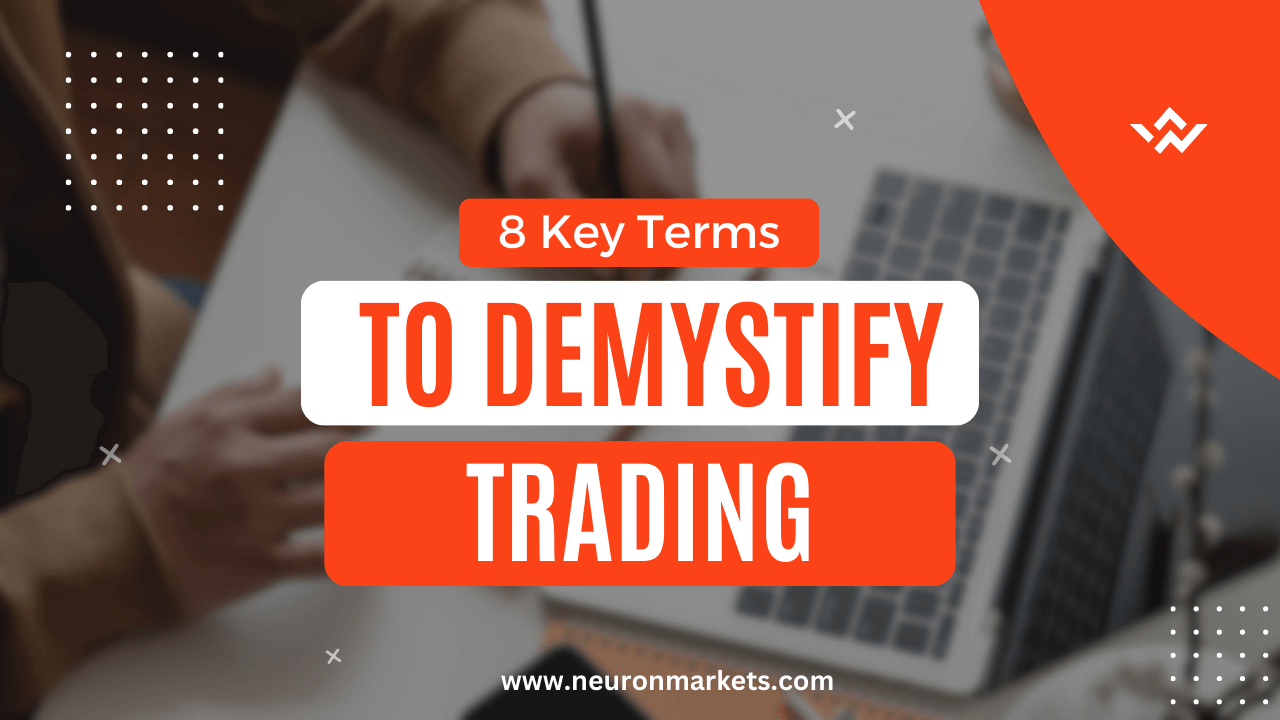Trading is like a labyrinth of acronyms for the ones just starting. But understanding it is necessary to be
a successful gem of the market. Let us jot down the most important terms you must know to succeed.
Let us do it together.
1. Bear vs. Bull Market
“The stock market is filled with individuals who know the price of everything, but the value of nothing.”
— Philip Fisher
Whenever you want to know the market direction, this comes at the top. When the investors are optimistic, and the prices are in a rising trend, that is characterized as a bull market. And when you notice there is pessimism and the prices are falling, that is known as a bull market. These are the key points when the traders decide on the market, whether they should buy something or sell some stocks.
2. Short vs. Long
“The stock market is a device for transferring money from the impatient to the patient.”
— Warren Buffett
These are the two strategies that the traders use while trading. Let us take the “short” position first. It involves selling an asset to buy the same asset back at a lower price in the coming days. Whereas, the “Long” position is when a trader by an asset with the intention that its value will increase. These two strategies do have their risks and rewards. Understanding these both is a necessary part of the trading strategy.
3. Volatility
“The investor’s chief problem — and even his worst enemy — is likely to be himself.”
— Benjamin Graham
It is the degree of variation in the price of an asset. When there is high volatility, that means that the price is changing unpredictably and rapidly, on the contrary, when there is low volatility that means there is more stability in the prices of the assets. While trading, traders use this volatility factor to know the risk level and to decide what are the potentials for profit in that specific trade.
4. Liquidity
“The market is a device for transferring money from the impatient to the patient.”
— Warren Buffett
Liquidity stands for the ease of buying or selling something without affecting its price. The assets with high liquidity can be traded with minimal price impact and the assets with low liquidity can be harder to sell or buy without the effect on their value. For a smooth trading execution, understanding the concept of liquidity is very much important.
5. Margin
“In investing, what is comfortable is rarely profitable.”
— Robert Arnott
Sometimes you need to increase your buying power, in doing so, you need funds, but what if you need a huge amount? For that brokers help you borrow funds to amplify potential profits. It also magnifies losses. Traders must maintain a minimum level to avoid any margin call. It is very crucial to manage risk when trading on margin, only then one can avoid significant losses.
6. What is Take Profit & Stop Loss
“The goal of a successful trader is to make the best trades. Money is secondary.”
— Alexander Elder
Take profit and Stop loss are wonderful tools and they help manage risk and lock in profits. When there is a stop loss added, the security will be sold automatically hitting that specific price set at stop loss. It will help save potential losses. Take profit orders automatically and sell the securities when they reach a specific profit target. This helps avoid emotional decision-making and also helps in sticking traders to their plans.
7. Market Order vs. Limit Order
“I never attempt to make money on the stock market. I buy on the assumption that they could close the market the next day and not reopen it for five years.“
— Warren Buffett
When the order is executed on a specific price, that’s called a limit order. On the other hand, when a broker buys or sells an asset at the current market price, we call it a market order. A market order is a guarantee over the price while a limit order has more control over price but may not be filled if the market takes a move away from the specific price. Both have their purposes and benefits. It depends on the situation of the broker and what suits his or her trading strategy.
8. Candlestick Patterns
“The four most dangerous words in investing are: ‘This time it’s different.'”
— Sir John Templeton
When traders want to see the visual representations of prices or to see trends or reversals in the market, candlestick patterns play a vital role. There are engulfing patterns, doji, and hammer candles, each of these provides potential price direction and gives valuable insight into market sentiments. Explore our other blog posts to understand them in depth.
Going deep into the trading world, and understanding it may be daunting, but if you master the key terms and concepts, there are better chances that you perform exceptionally. To make informed decisions, understanding these fundamental principles is crucial. Whether you are just hitting the ground or a seasoned pro trader, a firm understanding and grip on these terminologies is your foundation for success in the trading world.
I hope this helps a lot.
Forget not to subscribe to our newsletter below for more valuable insights.




